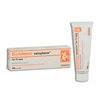 | Diclofenac Gel Active Ingredient: Diclofenac Diclofenac Gel is used for treating pain in certain joints (e.g., in the knees or hands) caused by osteoarthritis. It may also be used for other conditions as determined by your doctor. |
| Package | Per Pill | Price | Savings | Bonus | Order |
|---|---|---|---|---|---|
| 20gm × 4 1% gels | $9.74 | $38.94 | + Cialis | ||
| 20gm × 6 1% gels | $8.44 | $50.63 | $7.79 | + Ed trial pack 3 | |
| 20gm × 8 1% gels | $7.79 | $62.31 | $15.58 | + Levitra |
INDICATIONS
Diclofenac Gel is used for treating pain in certain joints (e.g., in the knees or hands) caused by osteoarthritis. It may also be used for other conditions as determined by your doctor. Diclofenac Gel is a nonsteroidal anti-inflammatory drug (NSAID).
INSTRUCTIONS
Use Diclofenac Gel as directed by your doctor.
- Do not use in larger or smaller amounts or for longer than recommended. Follow the directions on your prescription label.
- Do not use Diclofenac Gel on an open skin wound, or on areas of eczema, infection, skin rash, or burn injury.
- Do not cover the treated skin with a bandage or expose it to heat from a hot tub, heating pad, sauna, or heated water bed. Heat or bandaging can increase the amount of drug you absorb through your skin and may cause harmful effects.
- Wash your hands after applying Diclofenac Gel, unless you are treating the skin on your hands. Do not wear gloves for at least 10 minutes after applying Diclofenac Gel to the hands.
- After you apply Diclofenac Gel gel, wait at least 10 minutes before dressing and at least 1 hour before you bathe or shower.
- To treat arthritis pain in the foot, spread the Diclofenac gel out onto all areas of the foot including the toes and soles. When treating the hand, spread the gel out onto all areas of the hand including the fingers and palms.
- If you miss a dose of Diclofenac Gel, use it as soon as possible. If it is almost time for your next dose, skip the missed dose and go back to your regular dosing schedule. Do not use 2 doses at once.
Ask your health care provider any questions you may have about how to use Diclofenac Gel.
STORAGE
Store Diclofenac Gel at controlled room temperature, between 68 and 77 degrees F (20 and 25 degrees C). Store away from heat, moisture, and light. Do not store in the bathroom. Avoid freezing. Keep Diclofenac Gel out of the reach of children and away from pets.
Do NOT use Diclofenac Gel if:
- you are allergic to any ingredient in Diclofenac Gel, including benzyl alcohol, polyethylene glycol, or hyaluronate sodium.
Some medical conditions may interact with Diclofenac Gel. Tell your doctor or pharmacist if you have any medical conditions, especially if any of the following apply to you:
- if you are pregnant, planning to become pregnant, or are breast-feeding
- if you are taking any prescription or nonprescription medicine, herbal preparation, or dietary supplement
- if you have allergies to medicines, foods, or other substances
- if you have had a severe allergic reaction (eg, a severe rash, hives, difficulty breathing, dizziness) to aspirin or an NSAID (eg, celecoxib, ibuprofen, naproxen) in the past
- if you have growths in the nose (nasal polyps), severe kidney or liver problems, porphyria, asthma, or stomach or intestinal ulcers or bleeding.
Some medicines may interact with Diclofenac Gel. Tell your health care provider if you are taking any other medicines, especially any of the following:
- Aspirin or NSAIDs (eg, ibuprofen) because the risk of their side effects may be increased by Diclofenac Gel.
This may not be a complete list of all interactions that may occur. Ask your health care provider if Diclofenac Gel may interact with other medicines that you take. Check with your health care provider before you start, stop, or change the dose of any medicine.
Important safety information:
- Diclofenac Gel is for external use only. Avoid contact with the eyes. If you get Diclofenac Gel in your eyes, rinse thoroughly with cool tap water.
- Diclofenac Gel has diclofenac in it. Before you start any new medicine, check the label to see if it has diclofenac in it too. If it does or if you are not sure, check with your doctor or pharmacist.
- Diclofenac Gel may cause you to become sunburned more easily. Avoid the sun, sunlamps, or tanning booths until you know how you react to Diclofenac Gel. Use a sunscreen or wear protective clothing if you must be outside for more than a short time.
- Improvement usually occurs within 30 days after you stop using Diclofenac Gel. If no improvement is seen, contact your doctor.
- Do not use other skin products (eg, cosmetics, lotions, sunscreens) on the treated area without checking with your doctor.
- Diclofenac Gel should not be used in children; safety and effectiveness in children have not been confirmed.
- Pregnancy and breast-feeding: If you become pregnant, contact your doctor. You will need to discuss the benefits and risks of using Diclofenac Gel while you are pregnant. Diclofenac Gel is not recommended during the last 3 months (third trimester) of pregnancy because of the potential for fetal harm. It is not known if Diclofenac Gel is found in breast milk. Do not breastfeed while taking Diclofenac Gel.
All medicines may cause side effects, but many people have no, or minor, side effects.
Check with your doctor if any of these most common side effects persist or become bothersome:
Abnormal skin sensations; back pain; dry skin; peeling, scaling, or flaking.
Seek medical attention right away if any of these severe side effects occur:
Severe allergic reactions (rash; hives; itching; difficulty breathing; tightness in the chest; swelling of the mouth, face, lips, or tongue); chest pain; eye redness or swelling (conjunctivitis); fever, chills, or persistent sore throat; inflammation or severe irritation of the skin; muscle pain; open sores on the skin (ulcers).
This is not a complete list of all side effects that may occur. If you have questions about side effects, contact your health care provider.
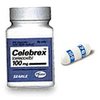 CelebrexCelebrex is used for treating rheumatoid arthritis, osteoarthritis, ankylosing spondylitis, juvenile arthritis, menstrual pain, or pain.as low as $0.6
CelebrexCelebrex is used for treating rheumatoid arthritis, osteoarthritis, ankylosing spondylitis, juvenile arthritis, menstrual pain, or pain.as low as $0.6 ColchicineColchicine is used for treating and preventing gout flares.as low as $0.57
ColchicineColchicine is used for treating and preventing gout flares.as low as $0.57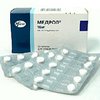 MedrolMedrol is used for treating severe allergies, arthritis, asthma, certain blood disorders, and skin conditions. as low as $0.8
MedrolMedrol is used for treating severe allergies, arthritis, asthma, certain blood disorders, and skin conditions. as low as $0.8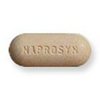 NaprosynNaprosyn is used for treating rheumatoid arthritis, osteoarthritis, ankylosing spondylitis, and juvenile arthritis. It is used to treat tendonitis, bursitis, gout, menstrual cramps, or mild to moderate pain.as low as $0.8
NaprosynNaprosyn is used for treating rheumatoid arthritis, osteoarthritis, ankylosing spondylitis, and juvenile arthritis. It is used to treat tendonitis, bursitis, gout, menstrual cramps, or mild to moderate pain.as low as $0.8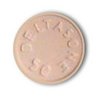 DeltasoneDeltasone is used to treat many different conditions such as allergic disorders, skin conditions, ulcerative colitis, arthritis, lupus, psoriasis, or breathing disorders.as low as $0.32
DeltasoneDeltasone is used to treat many different conditions such as allergic disorders, skin conditions, ulcerative colitis, arthritis, lupus, psoriasis, or breathing disorders.as low as $0.32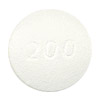 PlaquenilPlaquenil (hydroxychloroquine) is used to treat or prevent malaria, a disease caused by parasites that enter the body through the bite of a mosquito. Plaquenil is also used to treat symptoms of rheumatoid arthritis and lupus erythematosus.as low as $1.96
PlaquenilPlaquenil (hydroxychloroquine) is used to treat or prevent malaria, a disease caused by parasites that enter the body through the bite of a mosquito. Plaquenil is also used to treat symptoms of rheumatoid arthritis and lupus erythematosus.as low as $1.96